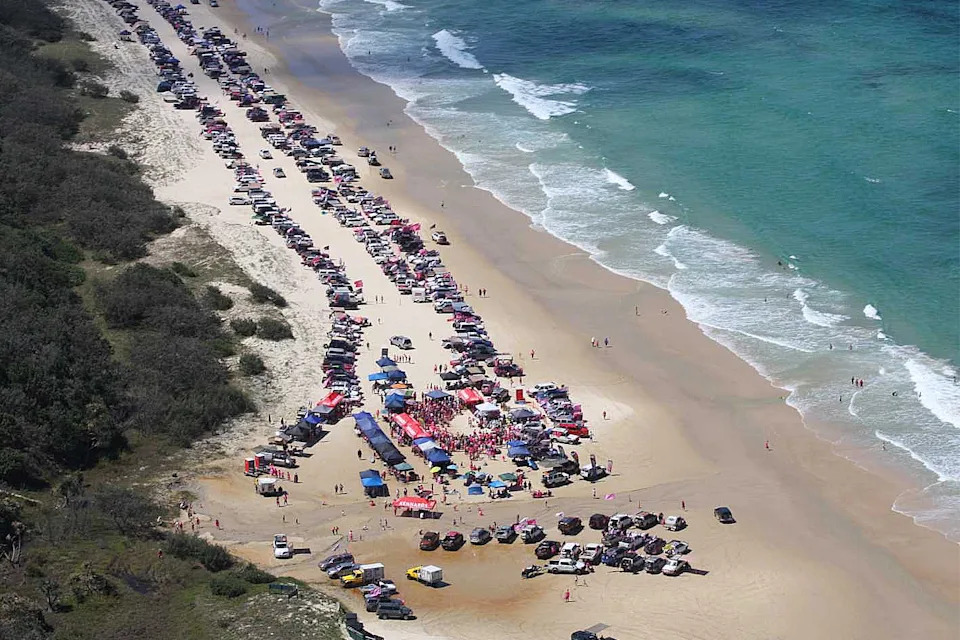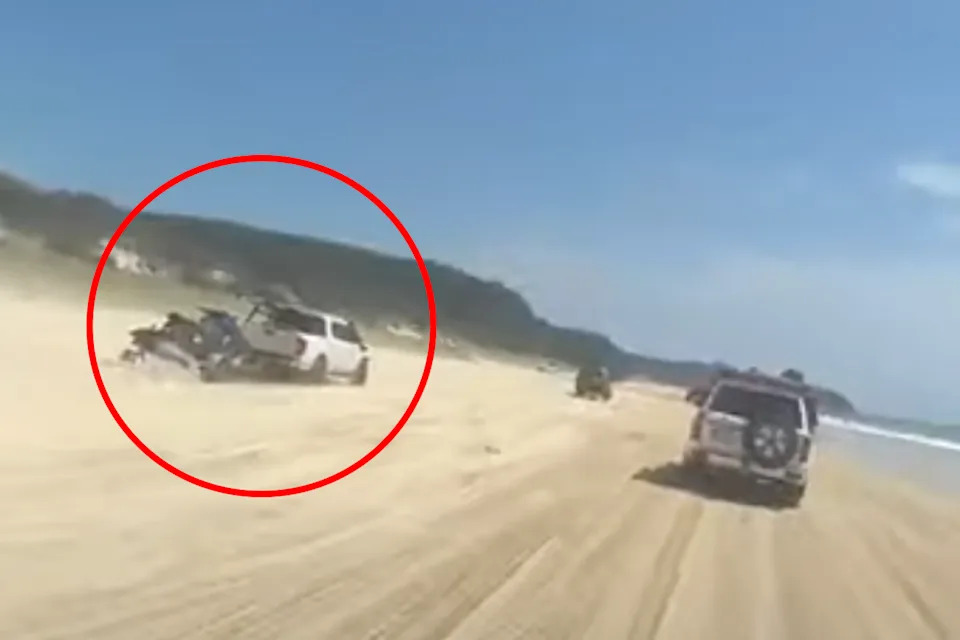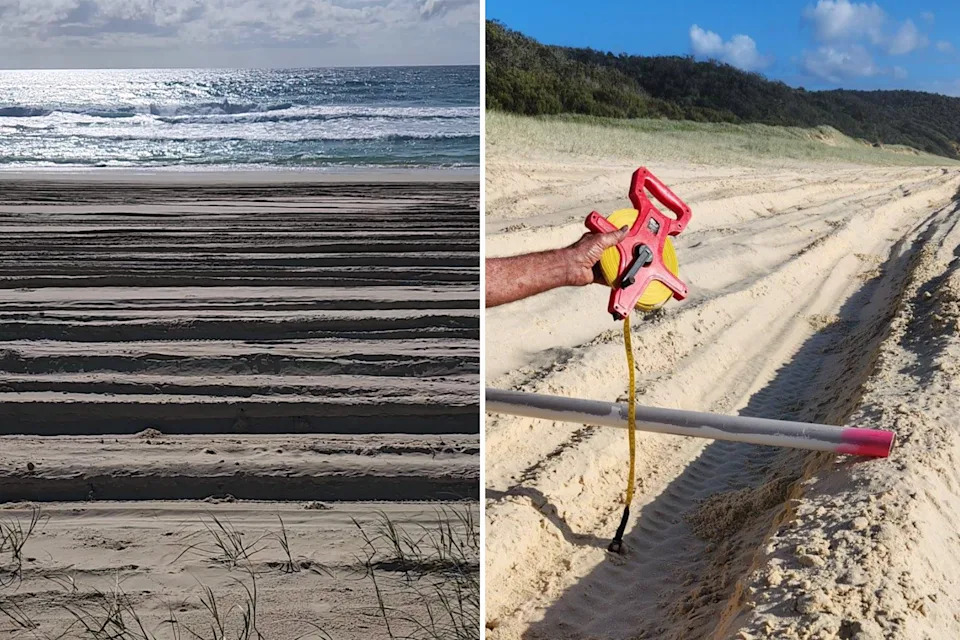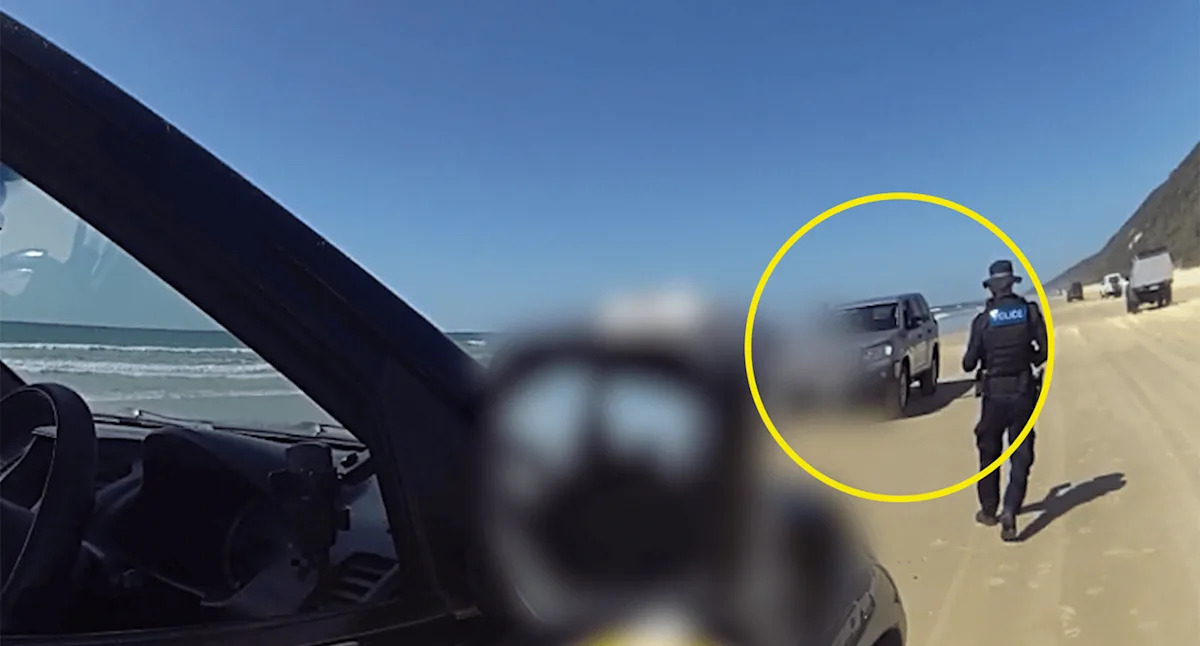More than 120 drivers have been issued infringement notices during a major four-day safety blitz across two popular tourist beaches. It comes as authorities issue an important warning to the droves of Aussies hitting the beach for the spring school holidays.
Queensland Police monitored Rainbow and Teewah Beaches, on the Sunshine Coast, from Friday to Monday, handing down a total of 126 infringements. Officers were in particular on the lookout for the “fatal five” — speeding, drink and drug driving, fatigue, distraction, and not wearing seatbelts.
Both hotspots draw hundreds of four-wheel drivers and campers on sunny weekends, making them a favourite escape for both locals and tourists.
But, issues have arisen in the past at both beaches over the impact people have on the landscape, with authorities being forced to issue various warnings for speeding, littering, and antisocial behaviour. It’s also a habitat and breeding ground for the endangered green turtle, with conservationists often clashing with revellers on the sand.
Across the four days, police conducted 207 breath tests and 39 drug tests. They said of those, two people returned a positive result for drink driving, and another for drug driving. Sunshine Coast Chief Inspector Michael Miley warned that people doing the wrong thing should expect to be caught.
“It’s concerning to see drivers detected for speeding and drink or drug driving on the sand so close to campers and beach goers,” Chief Inspector Miley said in a statement. “Please drive with extreme caution and be aware of your environment. Expect to be intercepted by police if you’re doing the wrong thing and putting the life of yourself, your passengers or the community at risk.”
Queensland man cops $4000 fine
Over the weekend, police intercepted a vehicle on Cooloola Beach after allegedly spotting the driver and passengers without seatbelts on September 20.
The 22-year-old Warwick man was handed five traffic infringement notices — including failing to wear a seatbelt, driving a defective vehicle, displaying P-plates incorrectly, and twice for carrying unrestrained passengers over 16. The fines totalled $4,052.
He also returned a positive drug test, copping a 24-hour licence suspension and a charge of drug driving. He’s due to face Noosa Magistrates Court on November 18.

Teehwah beach draw hundreds of four-wheel drivers and campers on sunny weekends. Source: Rainbow Beach Community News
That same day, in Cooloola, a 37-year-old Rochedale South man was charged with drink driving and had his licence suspended after recording a blood alcohol reading of 0.063. The following day, in Teewah, a 28-year-old Spring Hill man was also charged with drink driving, allegedly returning a reading of 0.141.
Why is beach driving controversial in the area?
Last year, authorities reduced the speed limits on some stretches of sand in the region in a bid to ensure the safety of both beachgoers and four-wheel drivers. Gympie Regional Council announced a 14km section of Cooloola Beach, adjacent to the Teewah Beach camping area, had been reduced to 40 kilometres per hour.
But there was no change to the 80km/h speed limit on other sections of Teewah, drawing criticism from some locals. Camping is allowed anywhere along Teewah, but many visitors to the popular spot said they feel they’re suffering the consequences of the irresponsible few.
Dr Lauren Pearson from Sustainable Mobility and Safety Research at Monash University explained how reducing speed limits has been “overwhelmingly positive” for many local communities around Australia.
“Beaches and campgrounds are the kind of places where people, and particularly kids, should be able to enjoy a space without risking serious injury,” she had earlier told Yahoo News. “Speed reductions are one of the more cost-effective steps we can take toward making our streets safe and usable by people of all ages and abilities.”

A ute was recently spotted speeding along the soft sand at Teewah Beach. Source: Sunshine Coast News

Turtle hatchlings often get trapped and die in the deep ruts left by tyres at Teewah Beach on the Sunshine Coast. Source: Jan Waters/Facebook
It’s something Jan Waters from Cooloola Coast Turtle Care recently spoke to Yahoo about. She warned Aussies of the serious consequences of beach driving. “The turtle hatchlings have to cross the deep 4WD tracks to reach the ocean [and] the tracks, created … on the beach close to the dunes at high tide, are 25cm deep and 25cm wide,” Waters said.
“The small hatchlings are only five centimetres, and once they’re caught in the tracks, they will most likely perish.” Waters encouraged drivers to travel on the hard, wet sand to ensure they leave behind no ruts. According to Schlacher’s study, there’s still no “safe level” of beach driving.
Do you have a story tip? Email: newsroomau@yahoonews.com.
You can also follow us on Facebook, Instagram, TikTok, Twitter and YouTube.


